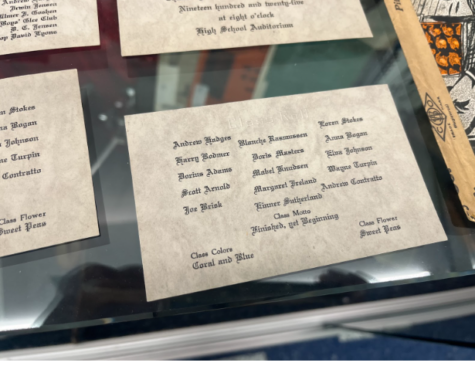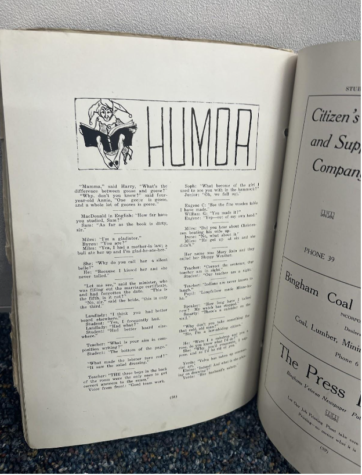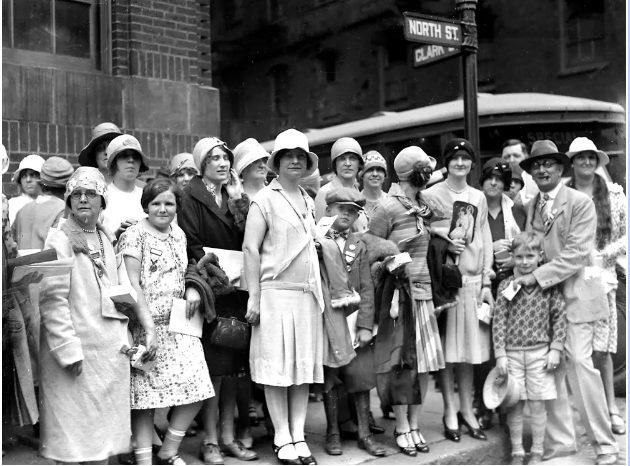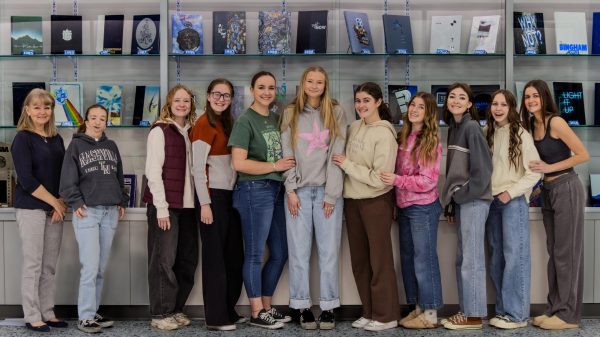One Century Ago
One century ago, Americans were listening to soap operas on the radio, eating Welch’s grape jelly, and were driving black Model Ts. Now, Americans watch the Hallmark Channel, eat Welch’s fruit snacks, and drive cars of all colors from many brands around the world. While many aspects of life today are similar to the 1920s, changes have occurred in education, sports, cinema and in American attitudes. Below are some of the ways that America has changed—or hasn’t since 1923.
Education
Education looked very different in the United States in 1923. Previously, school had been taught through rote memorization. Then, the American philosopher, John Dewey, introduced a new method to teach students. Rather than memorization and repetition, Dewey believed that students should learn by doing. However, even today much of school is based on memorizing formulas and facts. But now, students use much more technology such as computers and projectors. In 1923, schools in America were still segregated and women had fewer opportunities. According to the article What American Education Was Like 100 Years Ago, written by Lisa Borten on stacker.com, people over 25 in 1920 had only completed an average of eight and a half years of school. One hundred years later in 2020, 92% of the U.S. population had a high school diploma by the time that they turned 25 and 36% had a bachelor’s degree. Mr. Boberg, one of Bingham’s history teachers, has observed that now there is much more specialization in what students do for extracurriculars. He said, ”When my grandmother, [who graduated from Bingham in 1925] was in high school, she did four or five different activities. Now students are busier and instead of doing yearbook, newspaper, and a sport, they just choose one.”

Photo Credit: Sophie Whitehead

Photo Credit: Sophie Whitehead
Americans’ Attitudes About the World
The Great War, now more commonly known as World War I, had ended only five years before. “People believed that World War I had been the “war to end all wars,” Mr. Boberg said. After the destruction of World War I, the United States became very isolationist, meaning that the country stayed out of world conflicts and would avoid war at nearly any cost. A peace movement was ongoing and silver dollars known as “Peace dollars” were minted from 1921 to 1928. Mr. Boberg clarified that, “It wasn’t until after World War II that the United States became a world superpower and involved in world affairs.” In 2023, the Peace dollar is once again in circulation (minting began again in 2021) but American foreign policy is very different. Just last week, President Joe Biden was in Kyiv, Ukraine, giving U.S. support for the ongoing invasion. When asked if the United States is isolationist today, Mr. Boberg said, “Absolutely not . . . we don’t have troops on the ground, [in Ukraine] but we are giving support through weapons and aid, something that wouldn’t have happened in the 1920s.”
Sports
The most popular sport in America during the 1920s was baseball. In 1927, Babe Ruth hit 60 home runs in one season, which would be the record for 34 years. Americans loved seeing themselves in Babe Ruth because he was similar to the average American and had achieved “The American Dream.” In the 1970s, football became more popular in the United States. Other sports, including football, are more racially diverse. The first African American to play in a major baseball league was Jackie Robinson in 1948, 21 years after Ruth’s record breaking summer. Other sports such as football, tennis, and soccer have become more popular. International events such as the Olympics, the World Cup and the U.S. Open can now be watched by a larger audience. The 2022 World Series had an average of 11 million viewers in the United States compared to the 2022 World Cup which was watched by over 25 million.
Cinema
Movies were a main form of entertainment and Hollywood became “America’s film capital.” In the early 1920s, every film was silent. Musicians were hired to play piano in movie theaters to provide the soundtrack for the film. The first “talkie” or movie with sound was The Jazz Singer in 1927. In The Jazz Singer and other films, black face, yellow face and taping back eyes were common practices. Lead roles were reserved for white actors and Hollywood remained segregated. Lack of diversity continues to be controversial in Hollywood. It wasn’t until 1939 that Hattie McDaniel became the first African American to win an Oscar for her role as Mammy in Gone with the Wind. In 2023, 96 years after the first Oscar Academy Awards, Michelle Yeoh was nominated for best actress in the film Everything Everywhere All at Once. For many, she is considered to be the first Asian to be nominated for best actress.
The Impact
It is important to remember that the “Roaring Twenties” often weren’t as glamorous as portrayed. Life for many Americans, especially those who lived in rural areas, stayed mostly the same during this decade and the Great Depression during the 1930s. Lavish parties were limited to the big cities such as New York and Los Angeles. The “Roaring Twenties” gave Americans an “image” of carefree times before the storm that was the Great Depression. It’s exciting to imagine what life was like even if the “image” is only a small part of the entire picture.

I am a junior. I'm excited to be the News Editor this year. I love traveling, crocheting, and playing...





